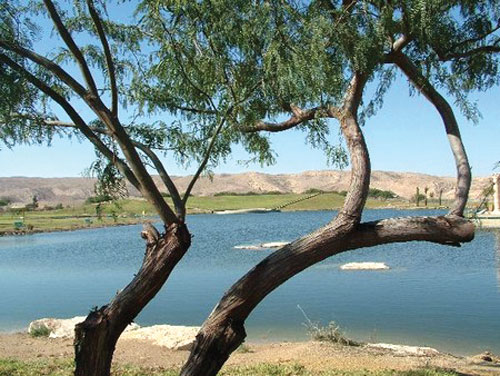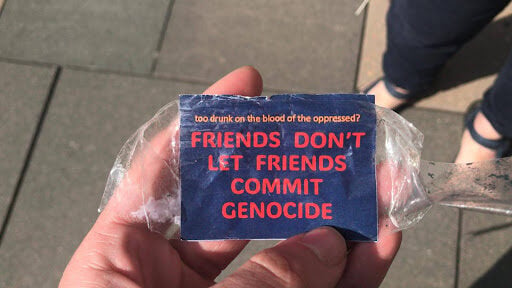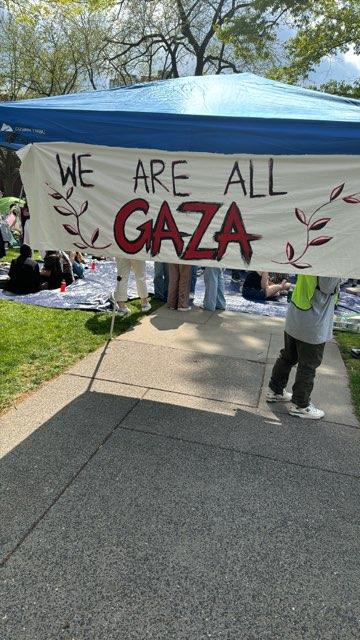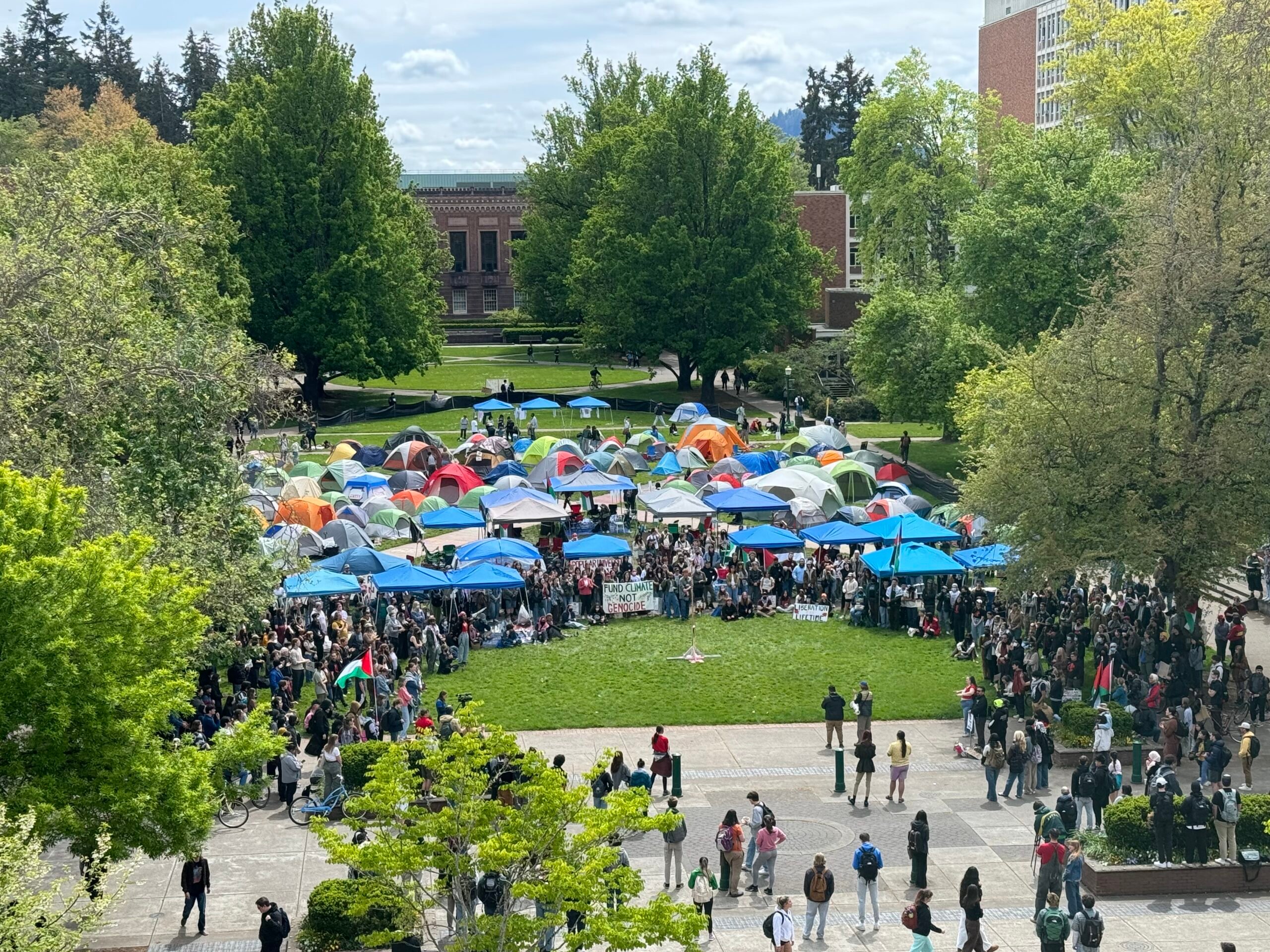.jpg)
.jpg)
The Jerusalem Post reports that Israel has adhered to, and even gone beyond, the water supply guidelines of the 1995 Oslo accords when providing water to the West Bank. They also accuse the Palestinians of wasting enormous amounts of water and refusing to conserve, treat and recycle water, despite modern technology available in the field. The PA has dug more than 250 unauthorized wells, and Israelis end up subsidizing the water sold to the Palestinians at discount. According to the Post, “residents of Tel Aviv and Haifa pay twice as much for their water as residents of Nablus and Ramallah.”
More than that, 95 percent of Palestinian sewage is left untreated, and flows into natural waterways, infiltrating the Mountain Aquifer (see story above) and polluting everyone’s water. Because the Palestinians refuse to cooperate with the Israelis, despite a $500 million fund for the purpose of doing so, in the last 15 years, only one sewage treatment plant has been built in the West Bank.
And then there is the waste. Many Palestinian farmers routinely flood their crops instead of using drip irrigation. International donors pay their water bills, so they don’t care about conservation. The Pos tnoted that by the Palestinian Water Authority’s own estimates, at least one-third of the water being pumped out of the ground is lost through leakage and mismanagement.
A water scarcity report issued recently as a collaboration of several U.S. intelligence agencies says the Middle is particularly susceptible to so-called “water wars.” They note that water could be a source of regional destabilization as well as a political tool or target for terrorist attacks.
As experts note, 97 percent of the world’s water is salt water, and only 1 percent of the rest is consumable by humans for all their needs. Yet fresh water supplies are not being replenished fast enough, especially in the Middle East. The United Nations predicts that by 2025, 30 countries will be water scarce, 18 of them in the Middle East and North Africa, including Israel and the Palestinians. (What many people do not realize is that one of the results of the Six-Day War was Israel taking control of the Mountain Aquifer in the West Bank and the Sea of Galilee.)
*In 1990, Syria and Iraq nearly joined forces and went to war with Turkey in response to the upstream riparian state stopping the flow of water from the Tigris and Euphrates to its downstream neighbors. In the last few decades, Turkey has built 19 hydro electricpalnsts and 22 dams along the Euphrates, making it saltier downstream. Eighty percent of Syrian potable water comes from the Euphrates, and Iraq relies on both rivers for potable water. Each nation has a grudging agreement with Turkey, but the issues are far from resolved.
Jordan and Israel need to discuss the ever-lowering waters of the Dead Sea, an issue that has been on the table for decades, and including building a canal between the Red and Dead Seas, as well as a wadi system to feed the lowest sea on Earth.
Saudi Arabia also need to start communicating about water usage from the Disi (Saq) aquifer that lies underneath both countries. Otherwise, the escalating tension can lead to a water war.
It is also important to be aware of the ability of water scarcity issues to offer an opportunity to collaborate and strengthen bilateral and multilateral ties, an opportunity downplayed by the intelligence estimate—and does not take into consideration Israel’s notable methods of water conservation, sewage treatment, and recycling.
This is not to say that Israel is not suffering from a water crisis of its own. It is, and according to the Jewish National Fund, there are several reasons for that. A. Israel is a semi-arid region with few sources of water. B. The population is growing rapidly. C. The standard of living with its accompanying consumption of water per capita is rising. D. There have been several consecutive years of drought.
Just three years ago, the most significant increase in general water consumption had been in household consumption—an increase of 95 percent, while industrial use has increased by only 4.3 percent and agricultural use has actually decreased by 9.4 percent due to the decrease in water allotment for agriculture. The distribution was: 7 percent for industrial use, 38 percent for household use and 55 percent for agriculture. The average daily household rate of consumption in Israel ranges from 100-230 liters per capita, an increase of 23.3 percent over the previous decade.
Israel’s sources of water include underground water from the mountain and coastal plain aquifers, ground water from Lake Kinneret, rivers, lakes, floodwaters and now, recycled water reservoirs. Underground water is the largest reserve of water in the country. Approximately two-thirds of the water in Israel originates from underground water that remains stored naturally underground and is pumped from wells or springs.
There are three types of alternative water: Sewage water that has been purified for irrigating crops, floodwater trapped by dams, and desalinated water. There are tremendous amounts of sewage water, floodwater, salt water and saline water in Israel that are not being optimally utilized. Storing this water and improving its quality using suitable technology will significantly increase the amount of available water.
JNF gathered water experts to formulate recommendations for integrating a water conservation system into Israel’s urban infrastructure. Since the issue is of national significance, JNF, the Israel Water Authority, the Mekorot Water Company and the Ministry of Environmental Protection joined forces to investigate how to do that best.
There are also other potential sources of water.
1. Urban runoff harvesting: Utilizing urban runoff has the potential to supply tens of millions of cubic meters of water annually. Utilizing this water however requires a biofilter, a sophisticated purification system. In this manner the water is purified and channeled back into the aquifer and for irrigating city parks and gardens.
2. Constructed Wetlands: Wetlands are a system of artificial swamps that imitate the purification processes performed by natural swampland and filter out organic material, suspended solids and heavy metals. The constructed wetlands are the means of rehabilitating the river ecosystem and its surroundings. The water is then pumped and piped out for use in crop irrigation and urban landscaping.
3. Shamir Drills: The drills are intended for extracting water from an untapped fossilized (non-renewable) aquifer. This source of water will be used to irrigate fruit tree groves and vineyards in the Golan Heights, and field crops in the Hula Valley.
JNF’s recycled water reservoirs are the final stage in a complex process for purifying sewage that includes breakdown of organic pollutants, removing suspended particles by sedimentation, and piping it out to the farmers. JNF’s 220 reservoirs provide about 260 cubic meters annually for that purpose.In 2010, they supplied about half of the water consumed by Israeli agriculture.
In recent years, due to a 40% cut in water allocations, many farmers were forced to stop working their fields. The JNF recycled water, which costs 50 percent less than fresh drinking water, makes it possible for these farmers to work the fields again, along with new fields—while freeing up valuable freshwater for drinking and domestic use.
As examples, there are projects that purify effluents from Beersheba and nearby villages, along with sewage from the Palestinian Authority in the Hebron region. The sewage will be recycled for agricultural use, thereby contributing both to agriculture and also to protecting the water quality of the aquifers that provide drinking water.
The Sderot reservoir—with a capacity of about one million cubic meters—receives sewage water diverted from the Shikma stream and purifies effluent from the towns of Sderot, Kibbutz Erez, Kibbutz Or HaNer and nearby factories. This restores the polluted stream and prevents seepage through the ground into the underground aquifer. The recycled water will be used to irrigate approximately 1,250 of orchards and citrus groves.
In the north, the Ma’ayan Tzvi water reservoir and its ‘twin sister’—the sewage purification plant located next to it—provides twelve million cubic meters of purified effluents to irrigate local agriculture. They collect the of the Carmel beach communities’ sewage, preventing pollution of the streams and the ocean; they provide water for agriculture for the farmers; and lastly, they harvest the floodwaters of Nahal Dalia, thus increasing the water in the reservoirs and improving its quality.
Desalination
There are several desalination plants, but it is difficult to desalinate large quantities of water, since in Israel, the main limitation is the cost. The process is extremely expensive and requires large amounts of energy which that will therefore create air pollution and waste other natural resources. Nevertheless, owing to the present water crisis in Israel, it seems that more and more sea water will be desalinated in the future and this may become one of the solutions to the severe water shortage.
Floodwater Reservoirs
During the rainy season, flash floods suddenly fill dry riverbeds with tremendous volumes of water, carrying soil and vegetation with them. City streets, too, often flood after hard rain, causing injury to people and damage to property. But despite the relatively high quality of floodwater, much water is lost as it flows through the riverbeds to the seas or, in the case of the cities, into the municipal drainage system.
Catching and storing flood water is not a simple process. In a flash flood, the flow is extremely intense and sudden. Despite this, even in ancient times people would build dams in the river channels with reservoirs nearby to trap the floodwaters before diverting the water from these reservoirs for irrigating the fields. The flood reservoirs built by JNF, in addition to greening the desert, provide a habitat for many birds and fish in ecological hubs—an economic-ecological-environmental contribution that JNF and many Israelis consider priceless.
by Jeanette Friedman and combined services













